Ukraine’s atomic past of Chernobyl and mutually assured destruction
If there was one day trip to get the warning klaxons honking, you would have thought that a visit to the world’s biggest nuclear disaster in a country at war with Russia would be it. Reality suggests otherwise: the site of the Chernobyl disaster has already become a well-worn tourist trail and the war bit of Ukraine is the best part of 500km away and shows little sign of extending an appreciable distance beyond its vague ceasefire line, despite regular abuses of its demarcation by both sides. If by some chance some future reader is accessing this from a shaky internet connection in the smouldering, irradiated wastelands of western Europe, please feel free to send a e-mail heaping scorn and derision upon me, although it’s quite possible I may have more pressing concerns on my mind than responding in due haste, given the situation.
Guided bus tours may not be my prefered form of outing but firstly, you don’t have any choice; secondly you wouldn’t learn anything by aimlessly wandering around on your own and thirdly, most importantly you are quite likely to end up absorbing more radioactive isotopes than your doctor would recommend. With this in mind the tour goes out of its way to demonstrate that with their guidance you are unlikely to absorb any more radiation than a flight across the Atlantic and a Geiger counter is whipped out at regular intervals to prove this, though sadly it didn’t make the beeping noise we were all hoping for.
It seemed only appropriate that the day dawned with a greyness worthy of English skies, as Chernobyl was above all a very human tragedy and didn’t warrant jolly blue heavens and little fluffy clouds. Enduring images are of oblivious locals in the town of Pripyat the morning after the accident, as soldiers watched radiation levels go off the scale but no one thought to evacuate anyone until much later; the 600 helicopter pilots who bravely flew thousands of missions over the demolished reactor getting cooked by invisible radiation, dropping loads to seal the fiery atomic rubble below; miners brought in to dig a tunnel under the core to stabilise it, working in such heat that wearing safety gear was impossible, many of those who still live suffer numerous ailments and agonies. Of course some will say that given the good old Soviet Union it was a case of, “do it or we’ll shoot you”, but there is no doubt that these men were driven by duty rather than coercion. Personally if I was given the choice of a bullet in the head or dig a tunnel under a nuclear reactor in meltdown I’d say, “fire away”.
Official figures for the death toll are in the embarrassingly measly range of about 30 or so but beyond that the experts have been arguing ever since about the effects of tons of toxic dust blowing over the region and beyond. Google away if you want to know more, there are endless reports awaiting you on the internet.
Before the site of the tragedy itself you get to visit the Inter-continental Ballisitc Missile (ICBM) early warning system within the 30km exclusion zone. If you are imagining something like a slightly glorified radar system, as I was, you would not be prepared for the vast geometric scaffolding structure that awaits you. At 150 m high and 500m long there’s not much else you could compare it to that you might find at home, so best look at the pictures. This beast belted out a regular low-frequency radio signal to do its job and so was named the Russian Woodpecker for its sonic effects, which annoyed the hell out of half the worlds amateur radio enthusiasts – so not all bad then!
The appeal of the visit really lies in the chance to see what a bit of the world would be like, or in all probability will be like given the way we are going, if the humans were removed from the scene. The town of Pripyat had a population of around 50 000 and has been left largely untouched since the inhabitants were all bused out back on the big day in 1986. The good news for planet earth is that even with such a huge radioactive fuck up nature still manages to reclaim its domain without those pesky humans making a mess of things on a daily basis.
Trees soon grow up through roads and even allowing for long-term health effects the wildlife population is blooming: wolves had become so numerous that some had to be culled as they were taking their toll on surrounding farm animals and pets. If you come along remember to bring some bread to feed the huge catfish, some over 2m long, that are thriving in the old cooling water channels.
Those of you who are familiar with my report on the destroyed and abandoned town of Agdam in Nagorno-Karabakh may remember that the lack of human traces served to dull the emotional impact of the site but with Chernobyl the abundant signs of everyday life, such as kids toys have provided so many staged shots for photographers that it almost has the same effect at times. I’ll let you mull over the ethics of this interaction as I let you peruse a brief gallery of the evidence.
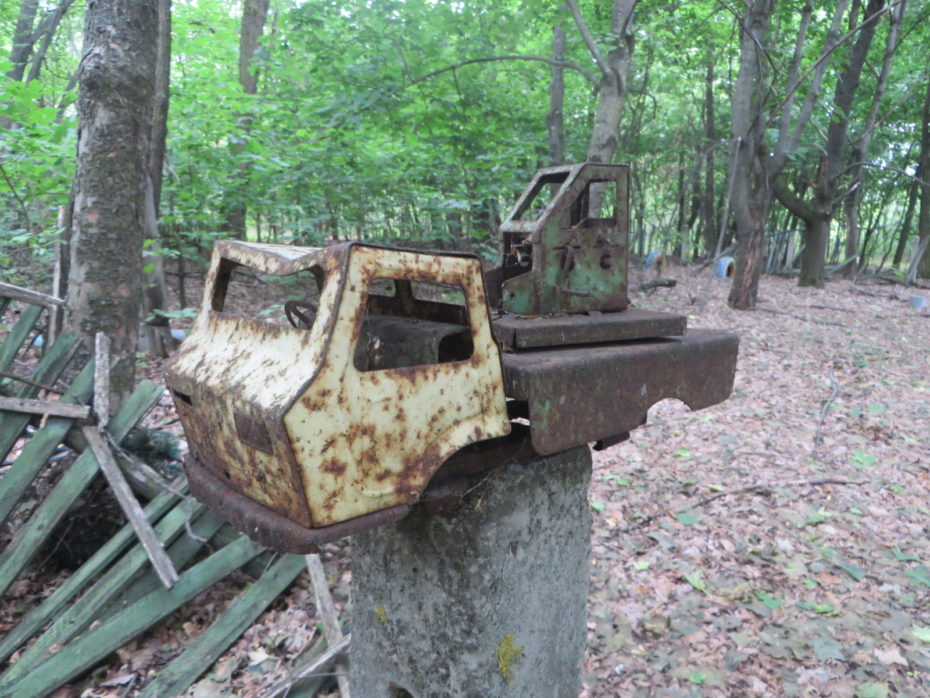
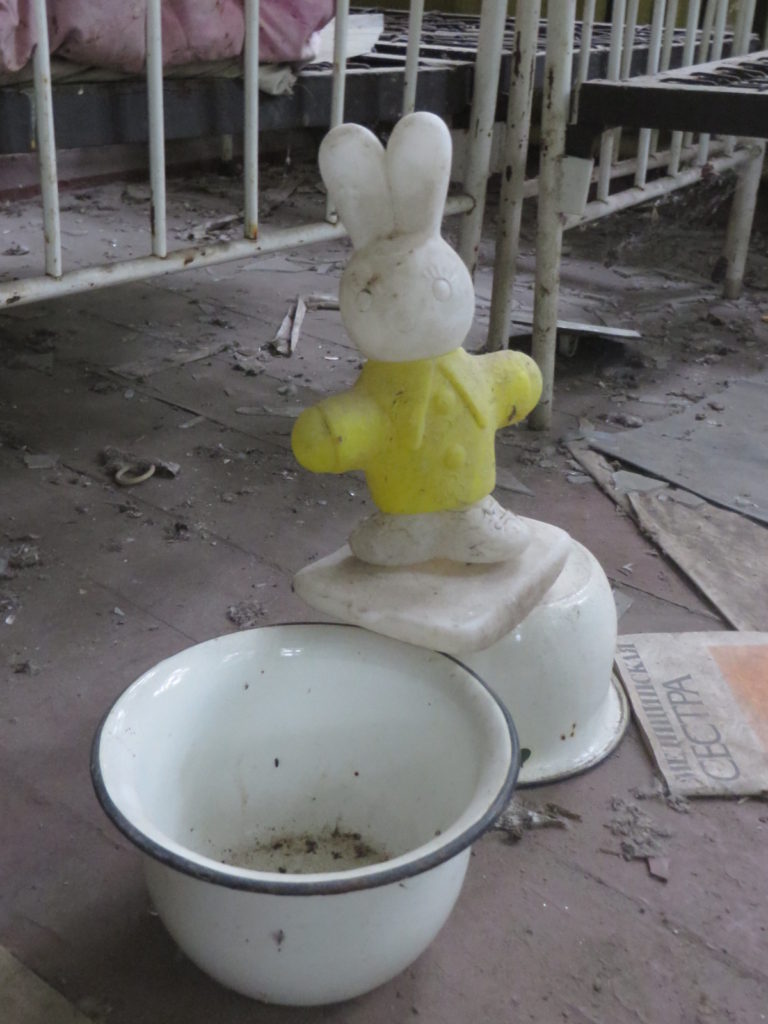


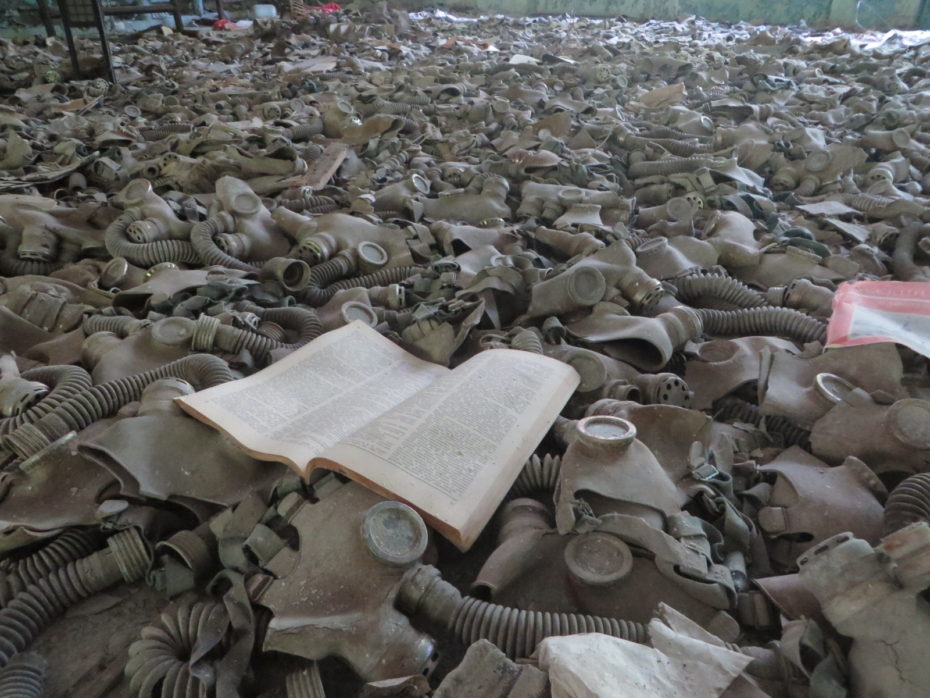
Work goes on to make the site safe as the concrete and steel originally used to seal up the reactor is beginning to decay.
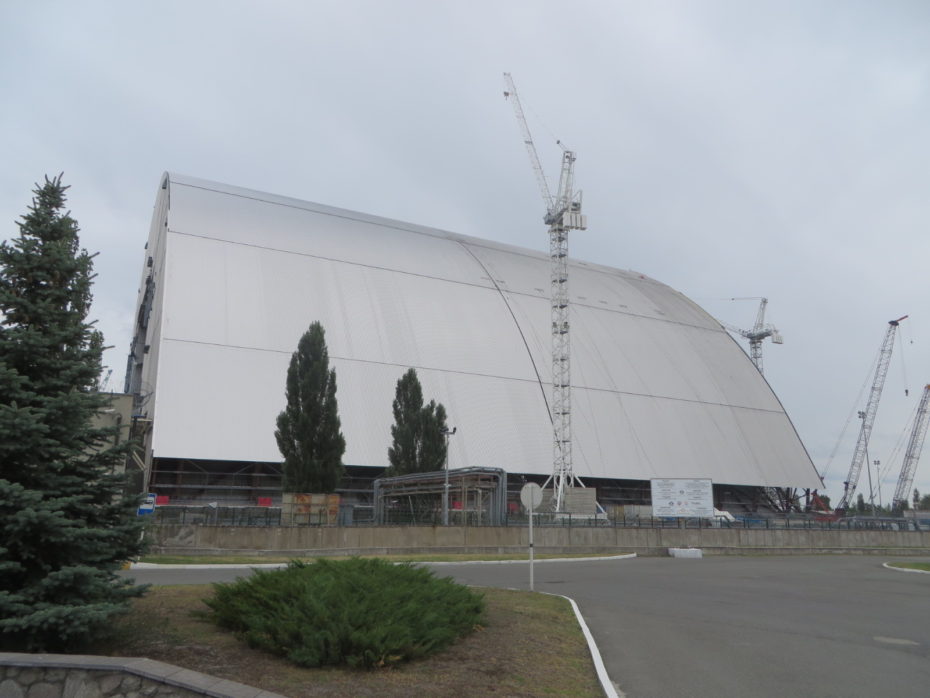
This new steel hangar is on tracks and will be rolled over the plant to seal it while automated machinery works inside
Few would get excited at the opportunity of viewing the grey hulk of the destroyed power plant at a suitably low radioactive distance of 300m. It’s more a chance to ponder its significance as workers limit themselves to 3 hour shifts in the stabilisation work and a huge hangar like construction is made to encase the site for long enough for our generation not to worry about it. Aside from the vast clean up costs which only hastened the collapse of the USSR it remained, until Fukushima, the biggest reminder that nuclear stuff might not be the best idea after all: as Chernobyl amply proves the human costs of it going wrong, with enormously long-term implications, demand serious reconsideration. An enemy you cannot see holds a terror far more insidious than a visible one.
If there could at least be said to be enough of a human story behind Chernobyl to provide some content for female tourists to grasp, the same cannot be said for the Strategic Missile Forces Base, the home to a former nuclear missile silo, from where a reciprocal Armageddon would have been unleashed upon the United States and its friends back in the happy times of the Cold War. Consequently I was right in my element with this chance to return to my childhood days and its obsession with all things military.
Even at the age of ten, my sad geekdom and that of my closest friends was confirmed with guidebooks to ICBM’s and German armoured fighting vehicles, we could reel off endless, pointless statistics of howitzer barrel diameters and megatonnage of warheads, oblivious to the charms of the fairer sex. Happily we have all turned out to be devout pacifists – a lesson for all those right on, new age parents dressing their boys in pink and giving their girls toy trucks to play with: don’t do it, they’ll only turn against you and grow up to join paramilitary death squads working for oil corporations. I have still stubbornly clung on to one trait from those days however, the complete lack of appeal to the fairer sex.
Our small, all male group was pleasantly surprised to find out that our guide to the base was in fact that most elusive of creatures, a woman. I did however suspect that she was chosen more for her mastery of the English language than a passionate interest in rocket launching systems but she never the less did a sterling job of answering the boy questions we all had.
Naturally we were all entranced by getting up close to an SS 18 “Satan” rocket in all its glory and the entire 240 tonnes of missile transporter vehicle, then were enraptured by learning about the intricacies of interlinked launch control systems and protocols. Is that the sound of ladies going off-line I hear?
The big draw was of course the chance to descend ten storeys down into the bowels of the control centre: a huge steel tube structure suspended within a concrete and steel silo to protect it from anything the evil Yankees could throw at it. At the end of several hundred metres of underground tunnel a humongous metal door led to the lift, which was suitably sized for four people prepared to be in intimate proximity to each other. The bonus of sharing it with the lady guide was somewhat tempered by the addition of two rotund American gentlemen. I was comforted by the memory of an episode of Mythbusters where they revealed that in the event of a catastrophic lift failure leading to a free fall you stood a reasonable chance of survival with a fat person to cushion your fall, so two would have done the job nicely. Also there was no chance of either of them getting through the miniscule escape hatch in the ceiling.
In the event of nuclear war the control module was designed to sustain lives of the three-man crew for 45 days and quite understandably they didn’t let any old idiot take charge of The Big Red Button, which was in fact small and grey and there were two of them, to be pushed simultaneously. Consequently only officers, after intense training and psychological assessment were given the job. As the quarters could only be described as rather cramped, one can also assume that the officers were also chosen for their lack of flatulence.
Despite the fact that the antiquated, grey panelled computer system possessed a fraction of the processing power of your average, modern phone it still functioned sufficiently to go through a firing sequence. You could press the buttons and the frantic alarm would blast out, as hundreds of lights flashed on the equipment and you kissed goodbye to an imaginary New York or target of your choosing. Being an overtly open-ended process, the Cold War presented the problem of how to keep the staff occupied during the mind numbing tedium of waiting for World War Three, so the authorities hit on the marvellous idea of making them go through a practice firing sequence every seven seconds for the entire duration of their six-hour shifts. This meant, in all likelihood, that in the event of the actual order being given, the men would have pressed the buttons before anyone had time to think, “oh, haven’t we just condemned several million people to oblivion”? Also after twenty years service of this working day you must have been driven absolutely loopy.
As Russia has kept about 50 similar bases in working order just in case the West needs nuking they were a little sensitive about some of the details of the base so some floors of the control module were out-of-bounds to everyone. One can only hope that they have replaced the computer systems with something a bit more sophisticated.
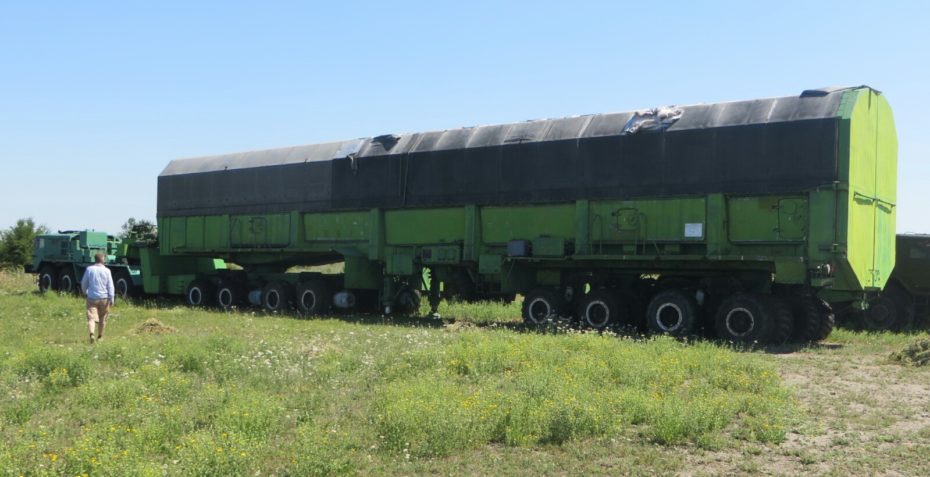
Not much demand these days for trucks big enough to haul nuclear missiles around. At 240 tonnes it needed another truck to help push it up hills
Enough time has elapsed since the closure of the base and its conversion to a museum that US servicemen who operated similar bases have had a chance to visit and compare notes with the former operators who help set up and run the peacetime operations now. The Russian crew were jealous on hearing that the US rocket fuel liquid had one major advantage over theirs: it didn’t melt the eyeballs of everyone within a 100 yard radius in the event of a leak. Such was its toxicity that when local villagers broke into one of the nearby bases looking for scrap that 80% became seriously and permanently ill.
Thankfully for us, all traces of fuel and nuclear warheads were removed long ago, allowing grown men to relive their youth in safety, unhindered by temptations of the flesh.




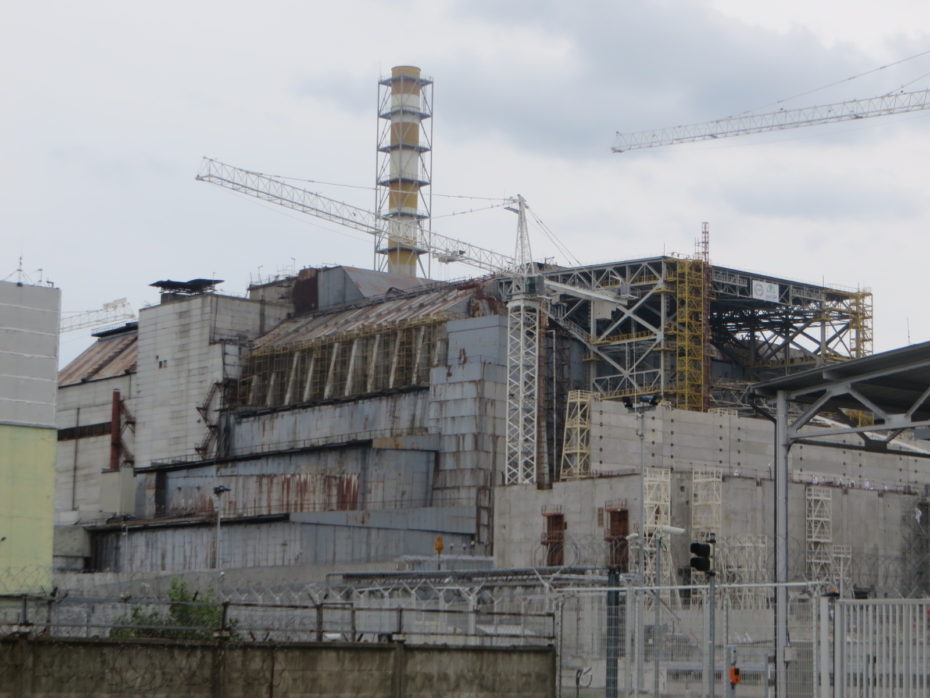
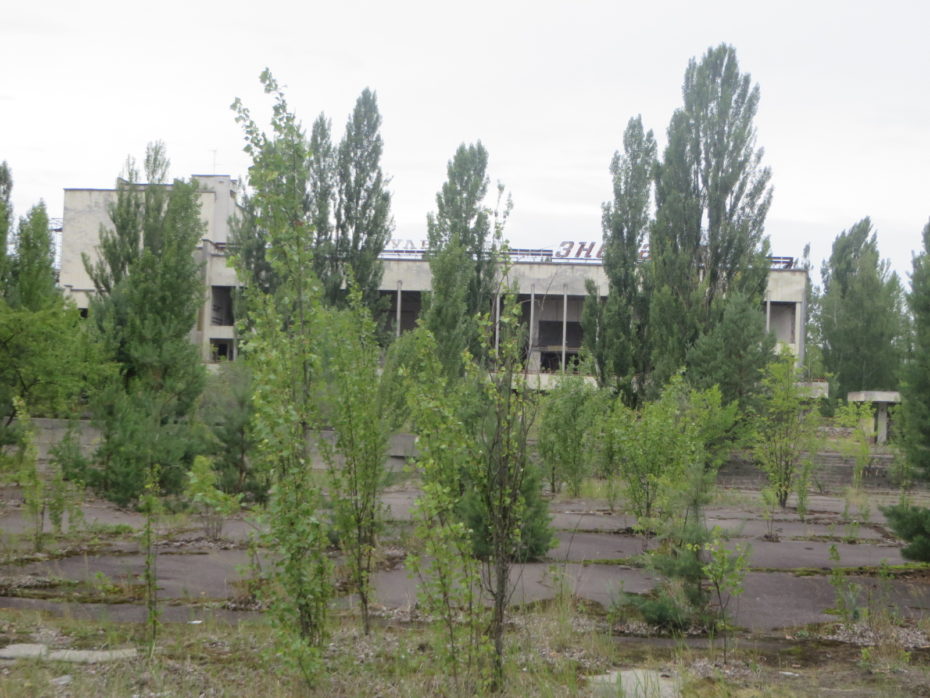
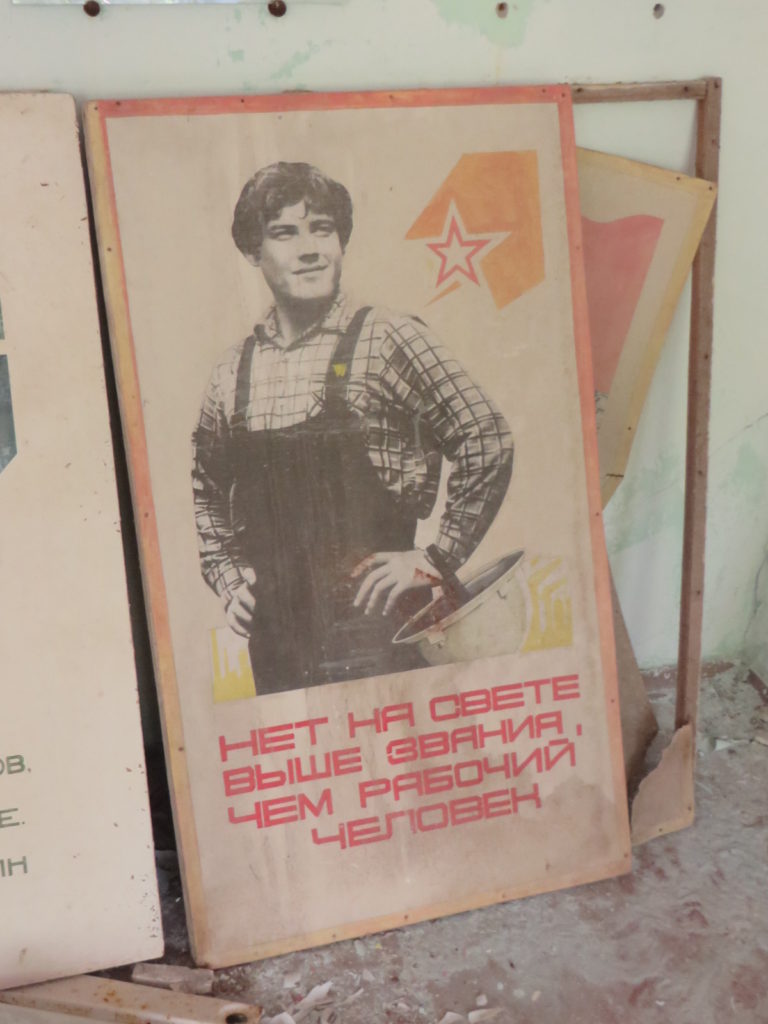
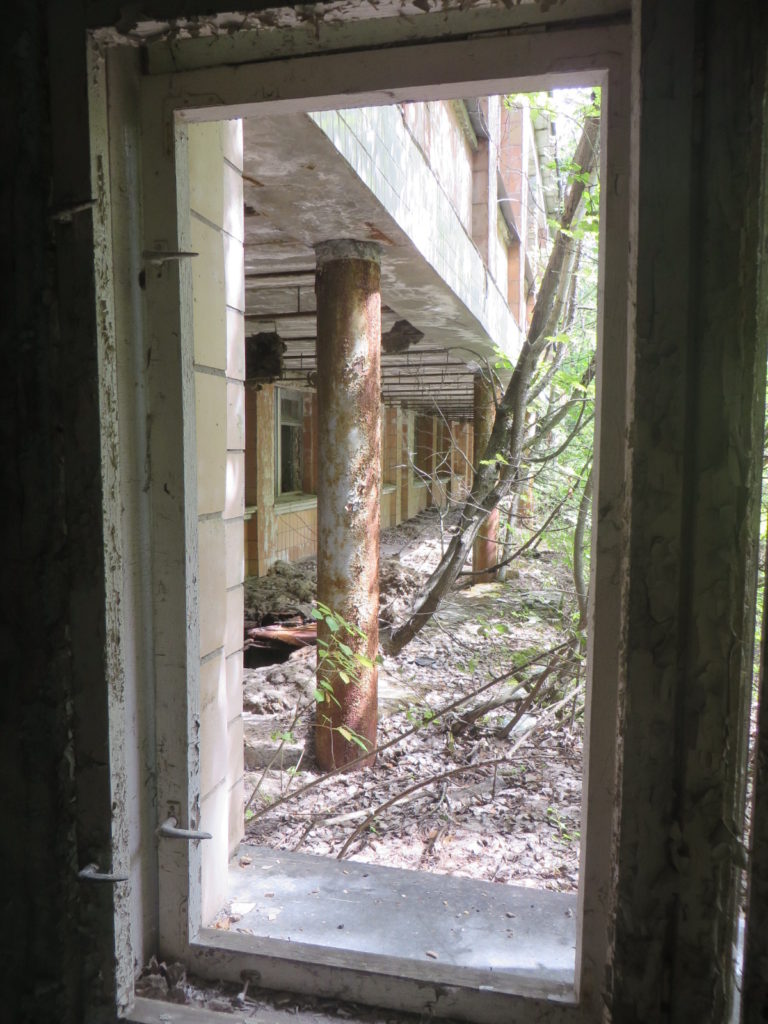
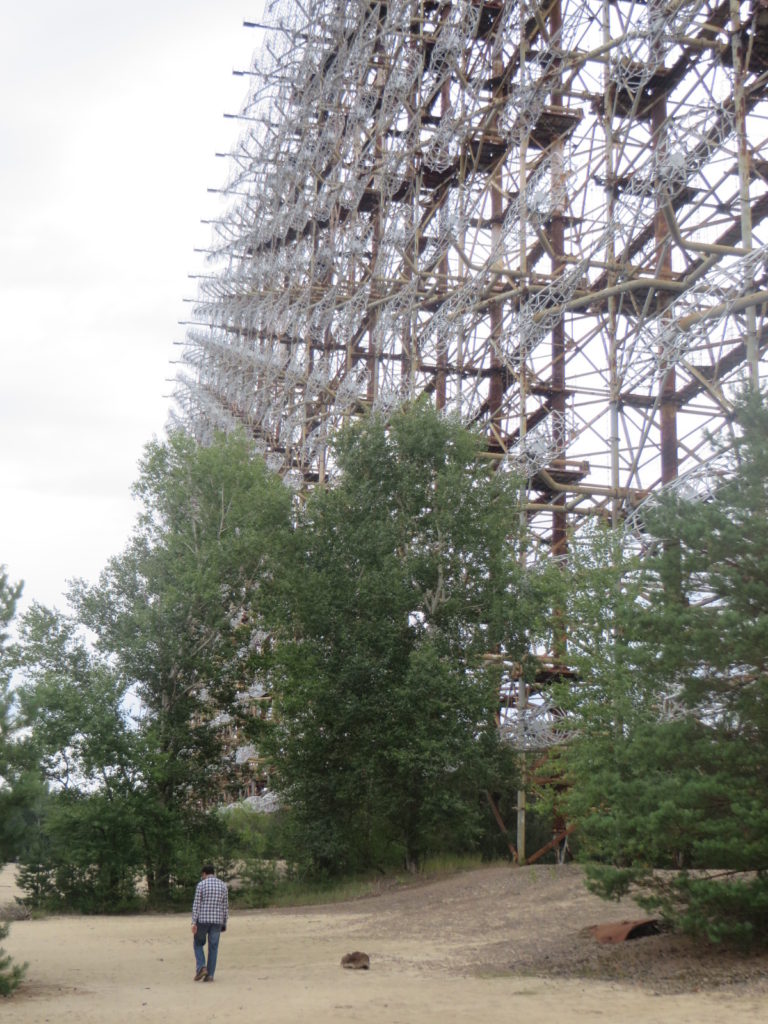
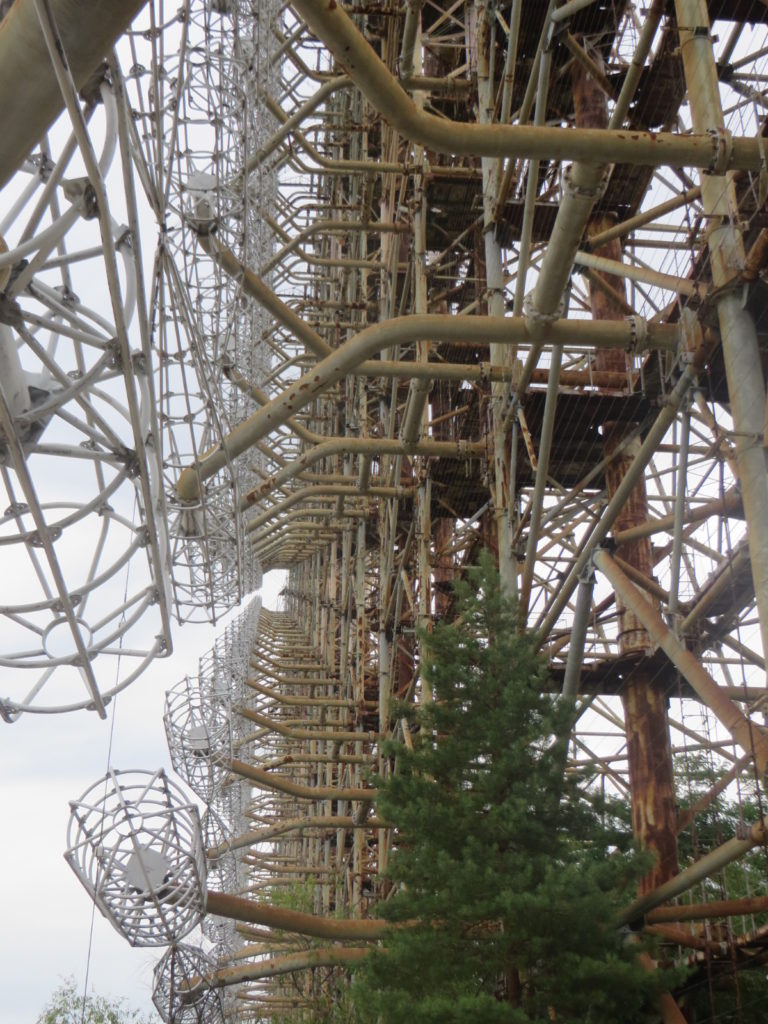
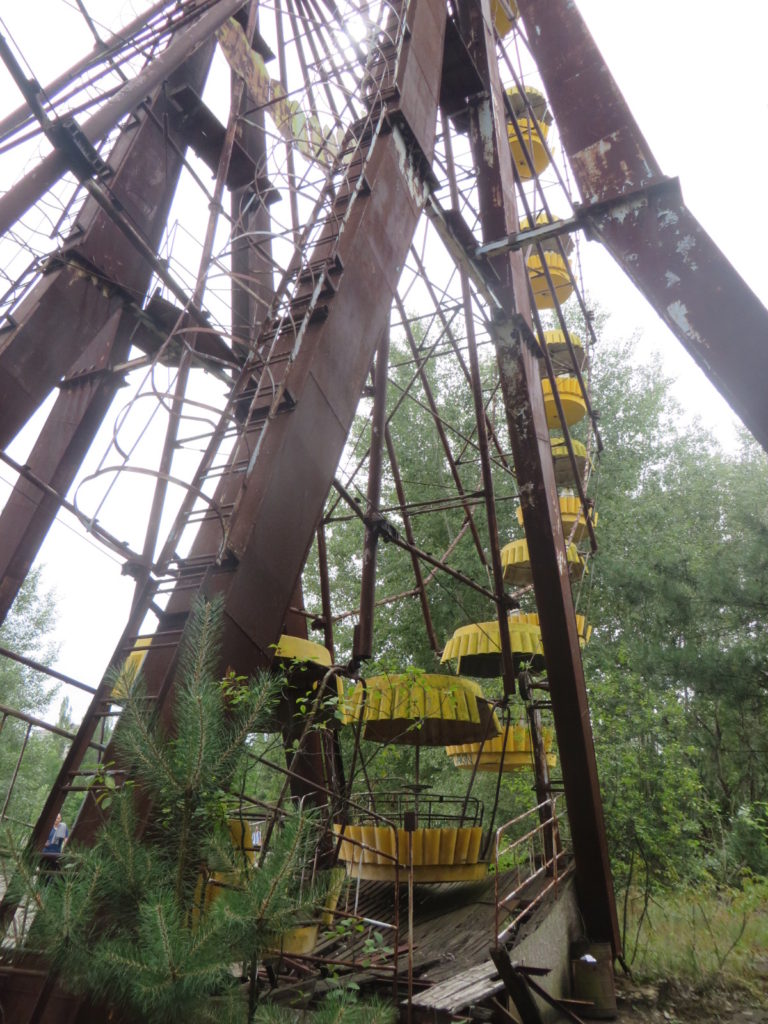
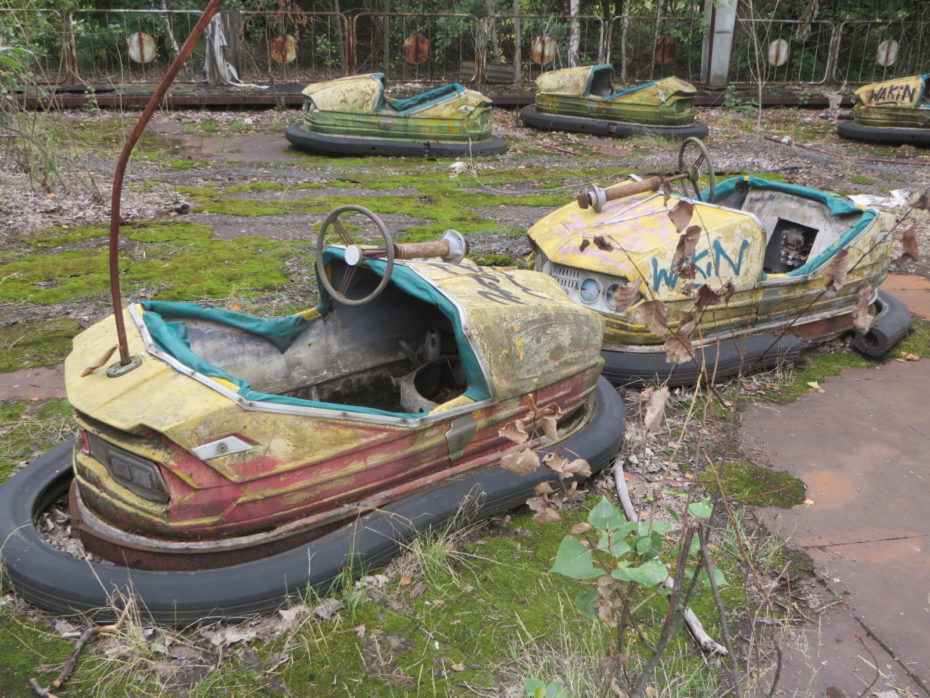
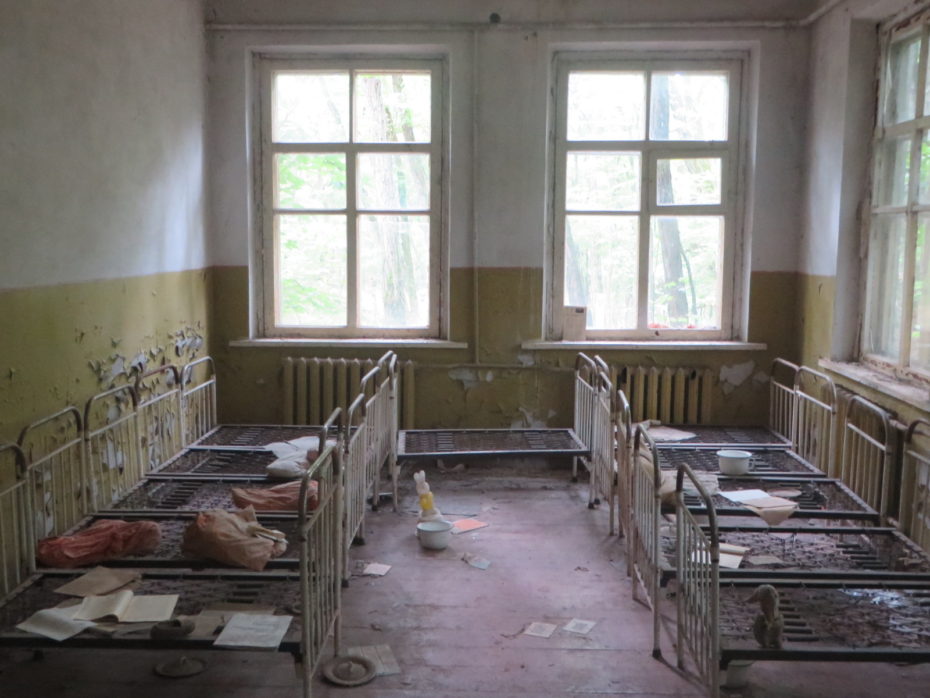
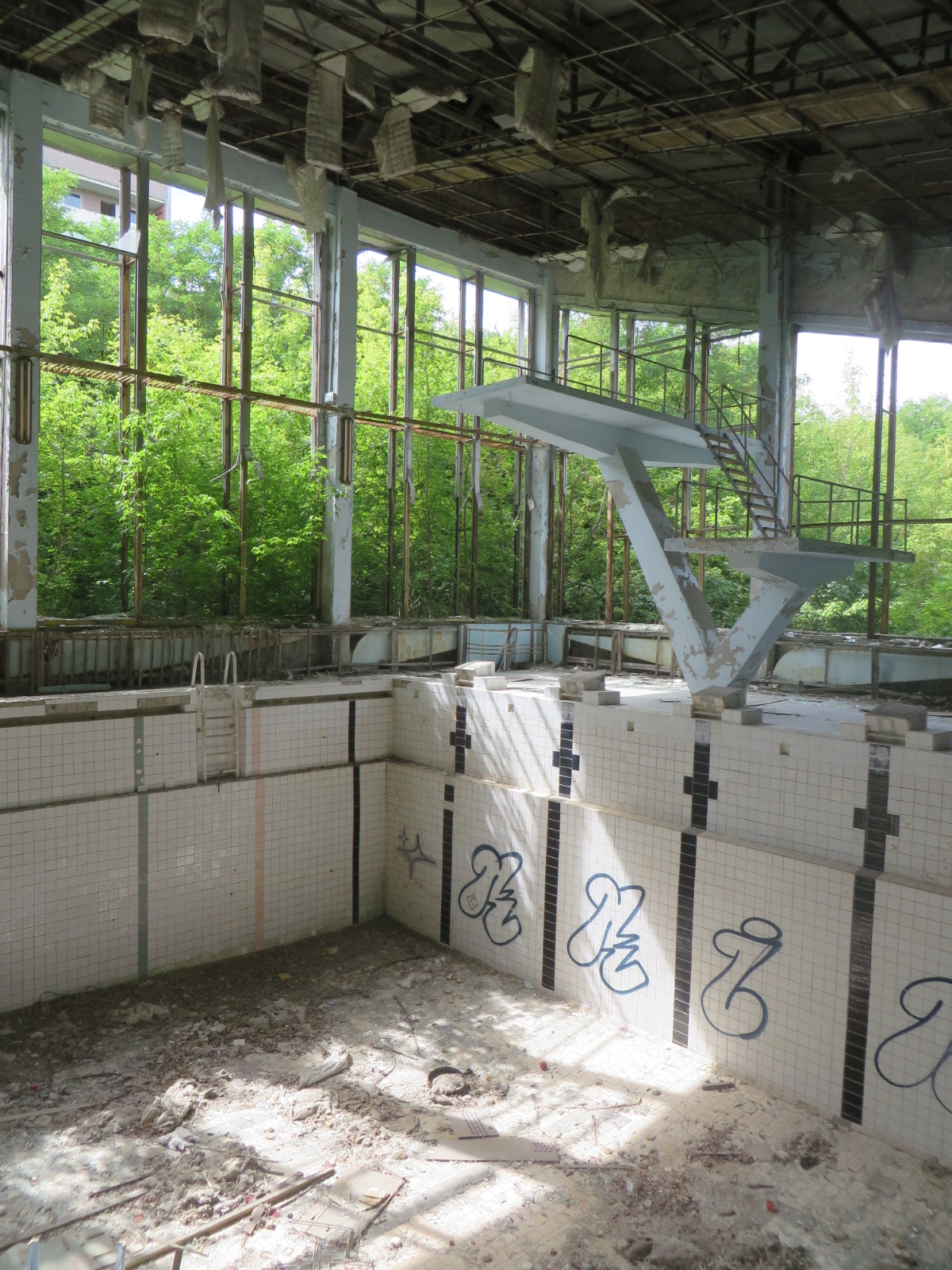
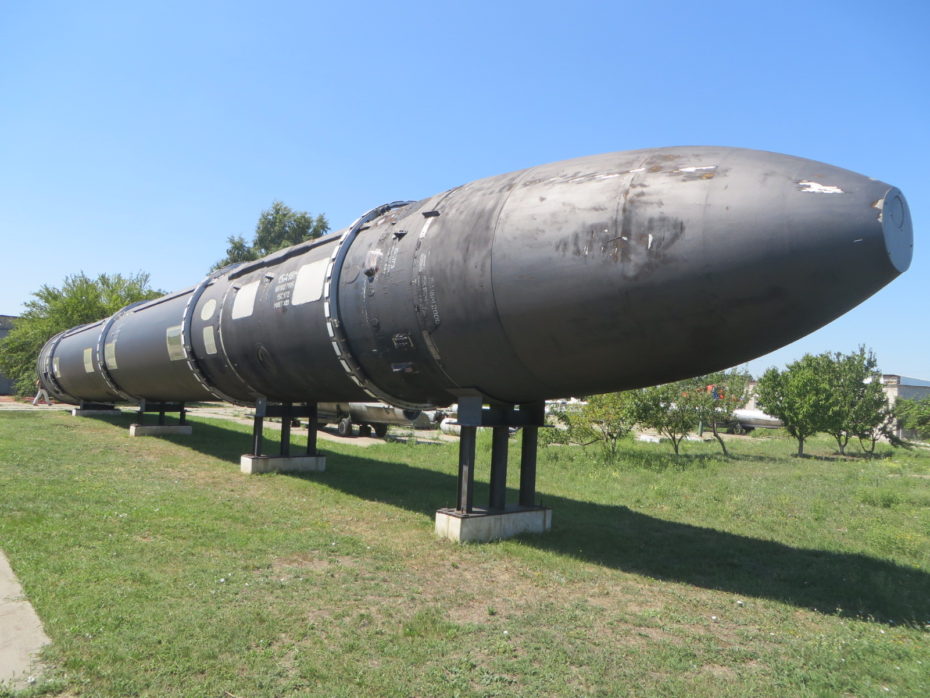
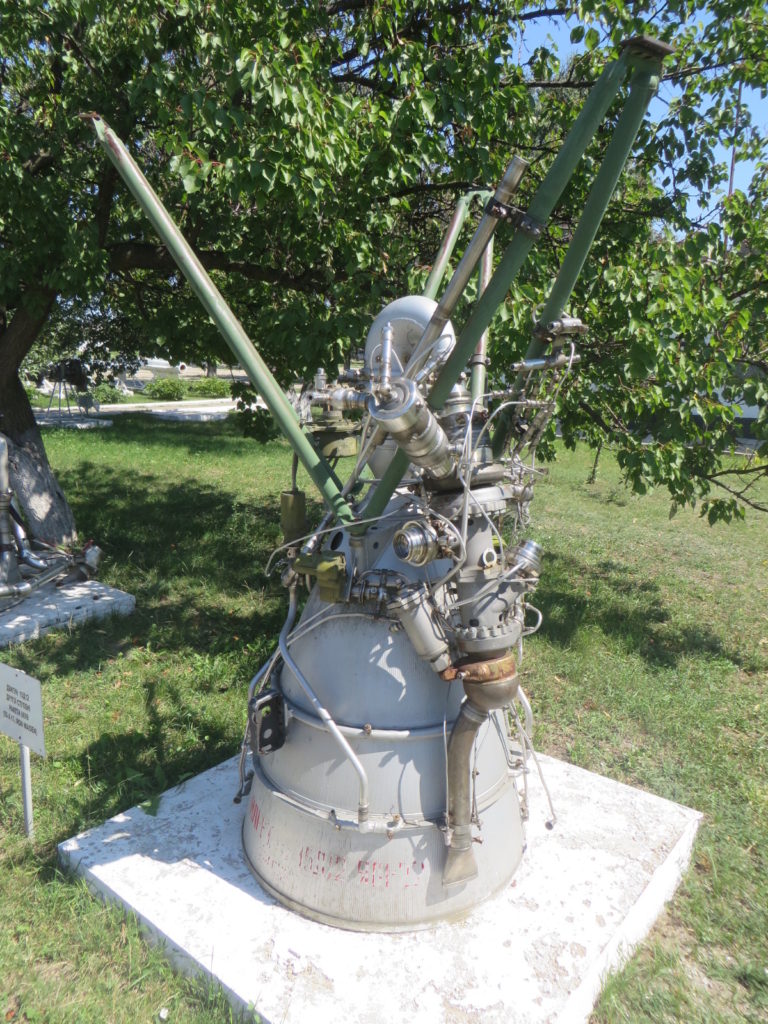
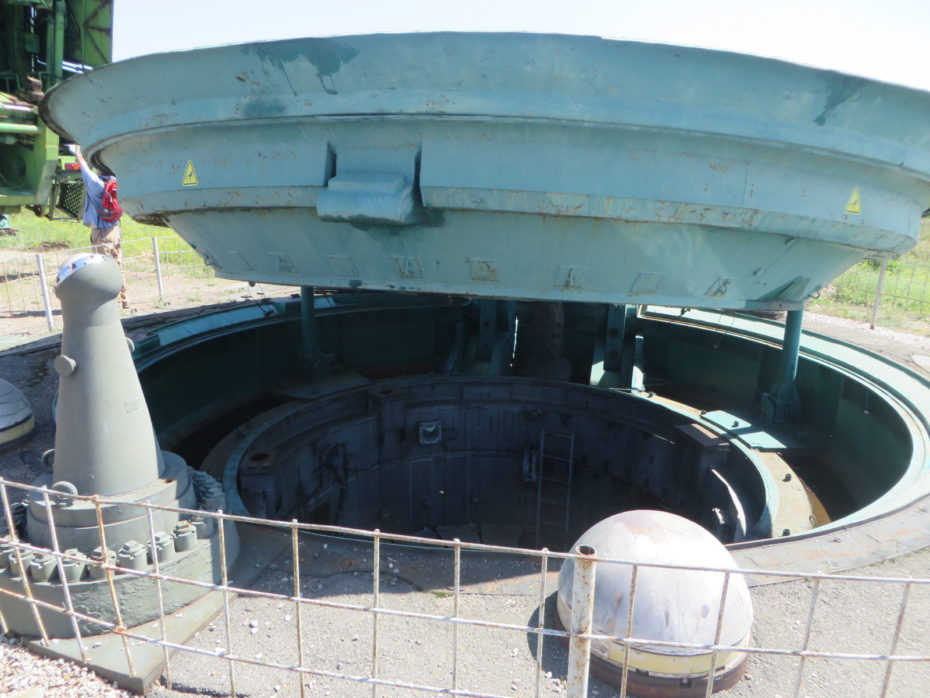


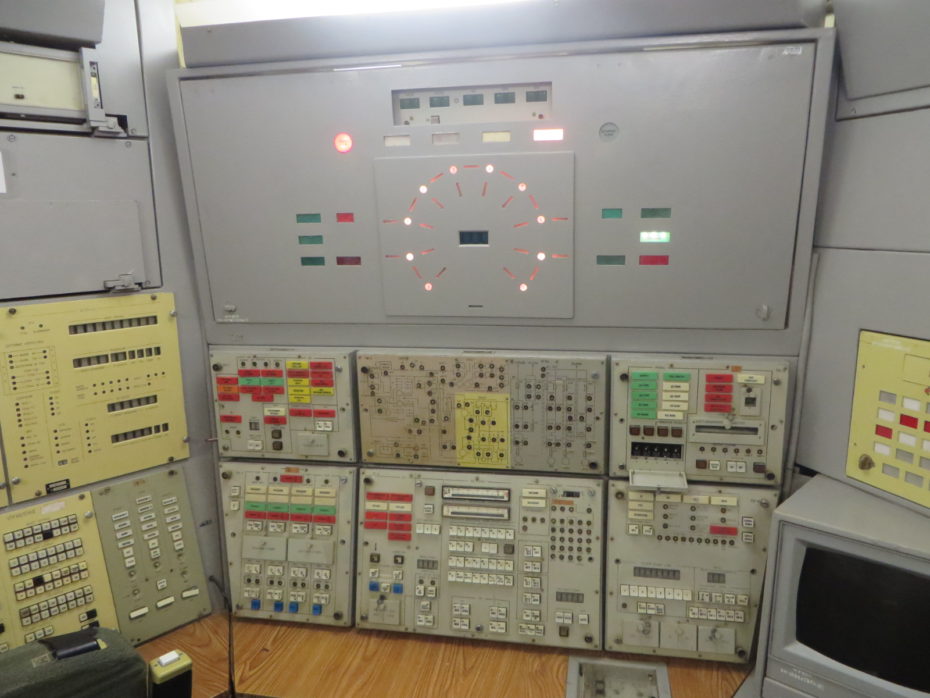
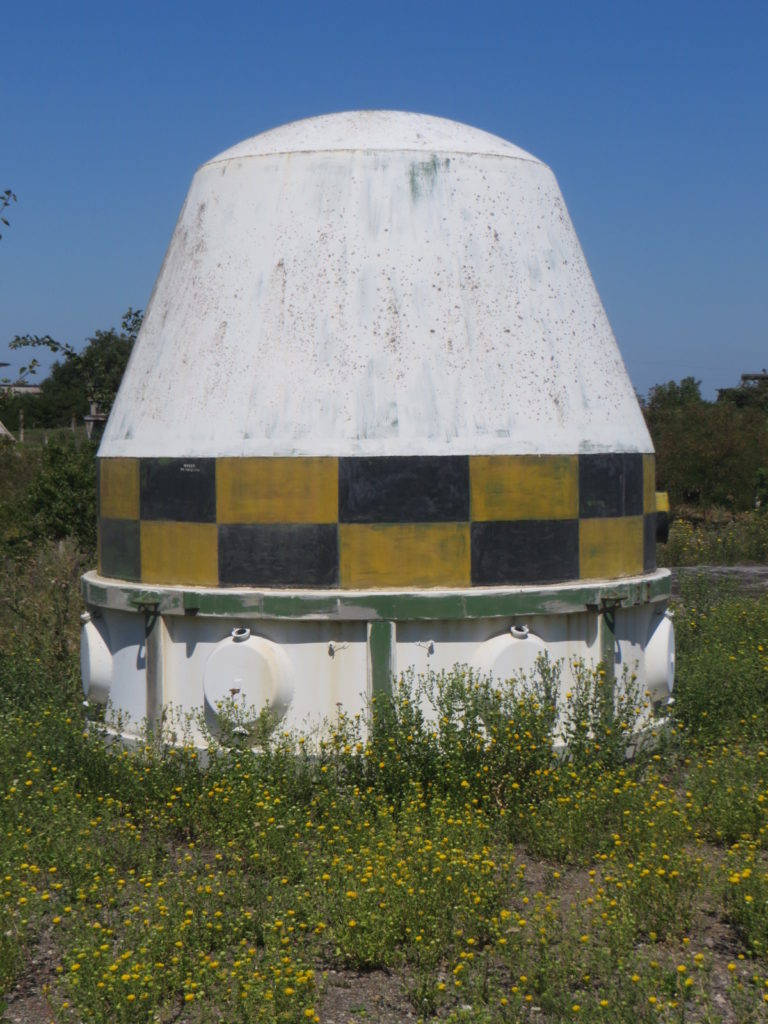

A gripping read all the way to the end, well done 🙂 I’m not one for group tours either but Chernobyl is definitely on the list.
Speaking of mother nature taking back what’s hers, thanks to the monsoon rains there is already tall grass and even the beginnings of bushes growing atop the quake rubble in these mountain villages. Four months. She works fast.
Thanks as ever for your support. Mother nature in the tropics works a lot quicker than elsewhere so not surprised about the growth in Nepal. How much longer are you staying there for?